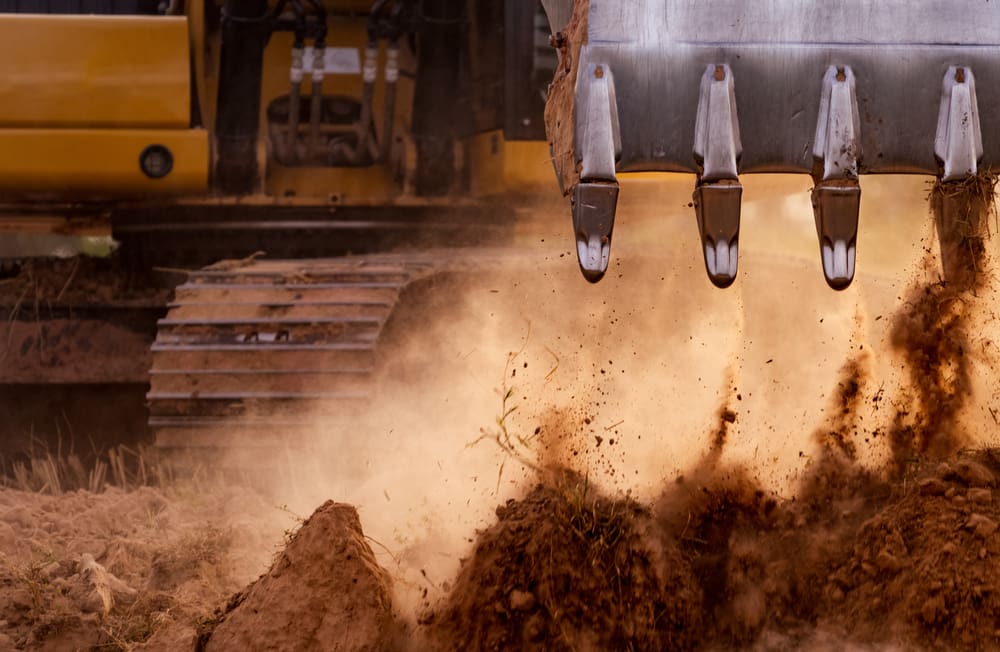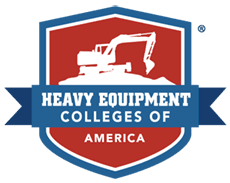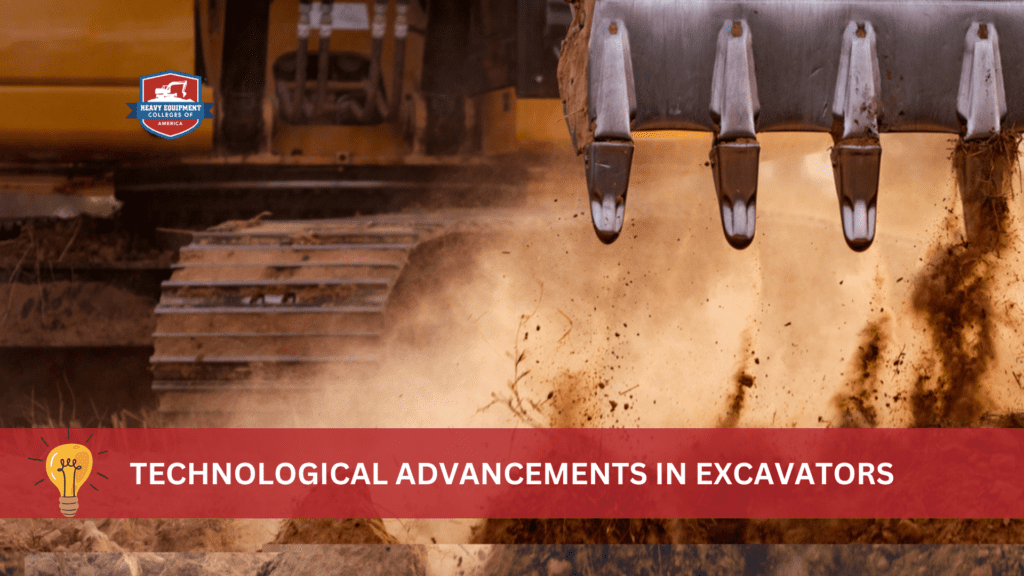With the earliest model dating back to the 18th century, excavators have helped construction workers dig trenches, mine essential resources, and haul heavy materials ever since. And we’re still using them today.
Thanks to technological advancements in excavators, projects can be completed faster and more accurately than in the past—all while keeping operators safe and comfortable. Keep reading to learn more about what excavators are used for and how modern advancements help them achieve these tasks more efficiently than ever before.
Table of Contents
The Anatomy of Excavators
Excavators are mounted on either tracks or wheels and feature a mobile boom and bucket that are powered by a hydraulic system. These machines are used to move large quantities of soil, gravel, and other aggregates. They’re relatively quiet, easy to maneuver, and environmentally friendly.
Excavators for Beginners
If you’re thinking about a career shift, or want to learn more about operating excavators, you’ve come to the right place.
Check out the top five things beginners need to know about operating an excavator.
What Is an Excavator Used For?
Excavators are versatile pieces of heavy equipment used on construction sites and in other similar settings. These are the primary tasks they accomplish:
- Dig trenches, foundations, and pools
- Haul soil, gravel, and other materials
- Mine
- Dredge rivers
- Load haul trucks
When equipped with the right attachments, they can also:
- Break down other machinery when needed
- Cut trees and brush
- Create mulch
- Demolish buildings and other structures
- Drive piles and shafts

What Are the Common Parts of an Excavator?
These are the components every excavator contains and what they do.
- Bucket: The bucket is a steel container attached to the end of the dipper that holds materials for transport.
- Linkage: The linkage is the piece that connects the bucket to the dipper to enable vertical movement.
- Dipper: The dipper—sometimes called the stick—connects the bucket and the linkage to the boom.
- Boom: The boom is a steel arm that raises and lowers the dipper.
- Cab: The cab contains manual controls and is where the operator sits to control the excavator’s movements.
- Car Body: The cab is mounted atop the car body, which keeps it secure.
- Cylinders: The cylinders are part of the hydraulic system. They allow the boom and dipper to move around.
- Engine: The engine is what enables the excavator to operate in the first place. It must be turned on to use the excavator in any capacity.
- Tracks or Wheels: The excavator is mounted on either tracks, which feature a series of steel plates, or wheels. This system enables the excavator to move between locations on a worksite.
- Sprockets: If an excavator runs on a track system, it also contains sprockets that allow the tracks to move forward and backward.
- Slew Ring: The slew ring is a round metal ring that connects the car body to the undercarriage of the excavator, enabling the machine to rotate 360 degrees.
The Latest Excavator Innovations and Technologies
Here are the seven most important excavating technologies you should know about.
1. Auto-Idling Technology
Excavators, like many other pieces of heavy equipment, consume a lot of energy to keep up with the demand placed on them. Auto-idling technology reduces the amount of fuel consumed by excavator engines during operation. This excavator technology only kicks in when the control levers are put in neutral for longer than four seconds.
2. Artificial Intelligence
AI algorithms make special excavator attachments more precise and accurate in their movements, providing greater control during operation. This is especially helpful for digging, grading, and demolition projects that require such precision and control.
3. Telematics and Data Analytics
Thanks to modern technology, excavators can collect and analyze data to enhance their performance. Telematics systems feature sensors, GPS tracking, and computers to monitor things like fuel consumption, engine performance, maintenance schedules, and location. Operators can make more informed decisions by assessing the analytics provided, helping them work more efficiently, maximize equipment longevity, and minimize operational costs.
4. GPS and Machine Control
GPS systems aren’t just for cars; they’re for excavators and other heavy equipment too. Thanks to satellite signals that help locate the exact location of the machine in real time, operators can navigate worksites more precisely and have greater control over the equipment.

This technology is particularly useful when operating an excavator on difficult terrain, which requires precise measurements and angles. It protects the equipment from damage, protects operators and other workers from hazards, reduces material waste and operational costs, and saves precious time.
5. Enhanced Operator Comfort and Safety Features
Thanks to modern features like obstruction detection systems, proximity sensors, and cameras, operating an excavator is safer than ever before. It’s also more comfortable than ever before. Climate-controlled cabins, reduced noise levels, and ergonomic seating keep operators comfortable while they’re using an excavator. Increased comfort results in less fatigue and fewer accidents on the job. It also increases productivity by enabling operators to work longer without needing to take a break.
6. Advanced Sensors for Smart Operation
Many of today’s excavator attachments feature advanced sensors that provide data regarding soil conditions, the position of the attachment, and potential hazards. This crucial feedback helps operators make more informed decisions that are based on the most up-to-date data, keeping them safe throughout the project at hand.
7. Remote Operation
Until recently, excavators have exclusively been operated from a cab containing manual controls. But thanks to remote operation capabilities, they can now be operated from a separate control room or through a digital interface. This technology not only makes excavator operation possible in less traditional environments but also makes worksites safer by reducing the risk of accidents.
Find an Excavator Operator Training School Near You
Searching for an excavator operator training program in your area? Apply to Heavy Equipment Colleges of America to see why our heavy equipment training school is right for you. Our excavator operator training programs combine classroom instruction with hands-on experience to give every student the personalized attention they need to give themselves the best chance at succeeding in any role.
Don’t wait to pursue the future you want. Apply to HEC today to get one step closer to your dream job.





